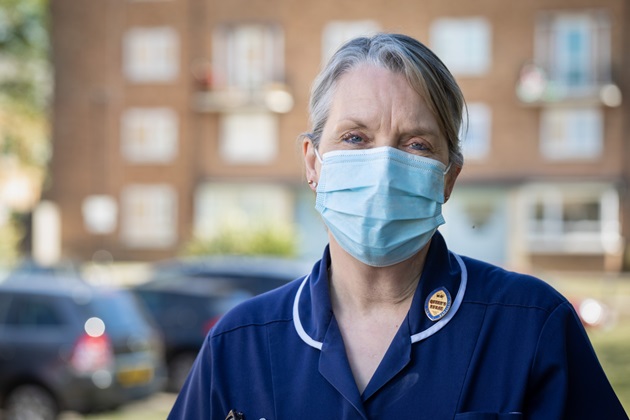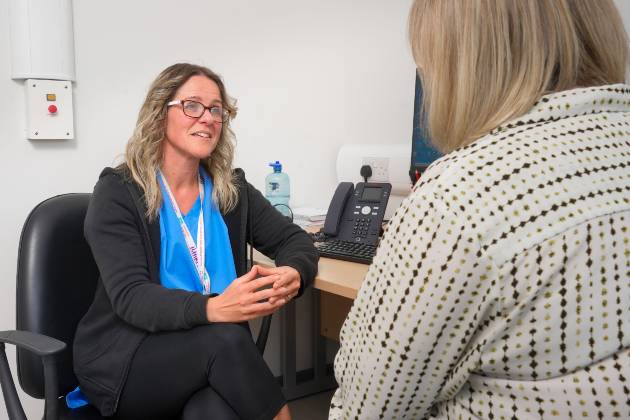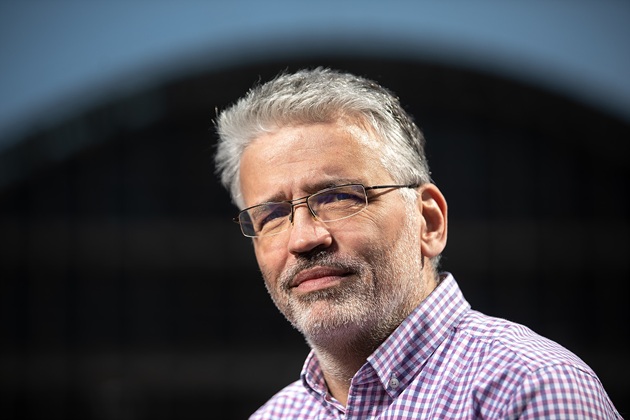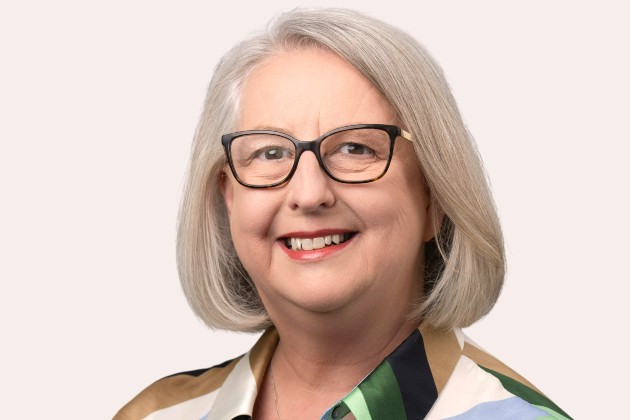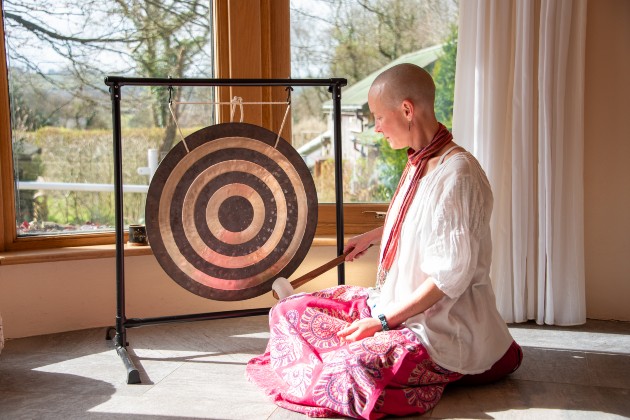Everyone is reflecting on a year spent living with COVID-19, especially the nursing staff who have worked throughout the pandemic.
While a lot of attention has been paid to the strain on hospitals, nursing staff in the community have also had to endure increased pressure on services and adapt to the unique challenges posed by the pandemic.
Gail Goddard, district nurse team manager at the Hounslow and Richmond Community Healthcare Trust, and Marysia Graffin, a district nursing sister at the Northern Health and Social Care Trust, describe how their services have stepped up to meet patient needs.
Life in lockdown
While hospitals were hit with a surge of COVID-19 patients in the first wave, the number of house visits initially dipped, says Gail.
This was due to lockdown restrictions and fear and uncertainty about letting non-household members into homes.
“We had people who we were visiting for fairly simple things, like wound or pressure area care, who didn’t want someone in to see them. This has led to a lot of people being quite deconditioned in the community,” she says.
Additionally, patients have been less likely to go into their GP surgery for regular health check-ups for long-term conditions, such as diabetes, asthma or cardiac illness.
While these have taken place over the phone or video, there is little “eyes on” time, and weekly visits from friends and family members were no longer taking place under social distancing restrictions.
“Maybe family would take them out for coffee, or do the shopping with them, just to see how they were doing,” says Gail.
“Because of restrictions, they’ve been unable to. That opportunity to pick things up – like noticing if something is a bit swollen, if movement is more impaired than usual – is getting missed. That unofficial monitoring is not going on.”
This has allowed for a lot of patients to slowly deteriorate when their conditions would have been picked up sooner under normal circumstances.
Maybe family would take them out just to see how they were doing. Because of restrictions, they’ve been unable to
Increased complex referrals
During the second wave, the number of referrals to community services went up and there was an increase in patients with more complicated health needs.
“The type of referrals we were getting were for people coming out of hospital and their condition was really quite complex. They were deconditioned, bedbound, they may have had pressure areas or been incontinent,” says Gail.
“Before COVID-19, we had one or two patients like this a week. In the second wave, we were getting much more, maybe one or two a day.”
Pressure in hospitals led to quicker discharges, alongside a decreased capacity to offer rehabilitation services – leaving more work for community health staff to pick up.
Older patients often have reduced mobility, which decreased even further because of lockdown restrictions. This, once again, led to deconditioning.
Marysia explains: “Within our elderly population, some patients with long-term conditions such as heart failure, multiple sclerosis and Parkinson’s disease have required a more intensive input from their carers.
“This requires more care from everyone in the integrated team.”
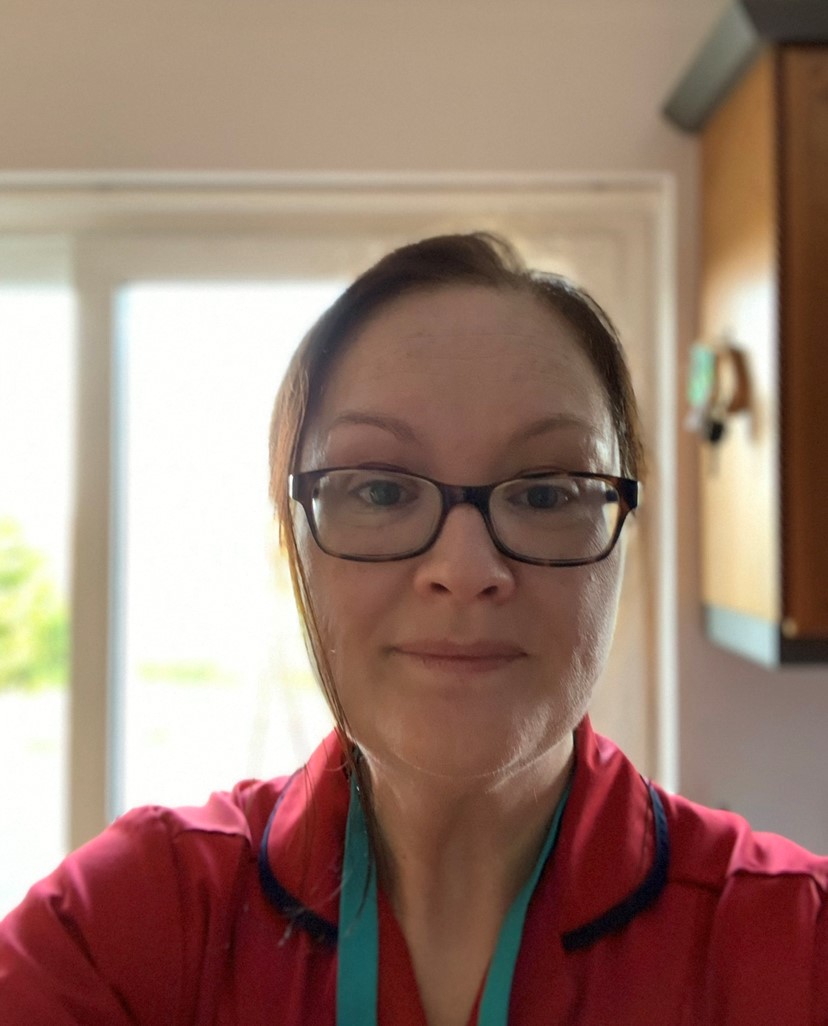
The big fear
Not only have patients been afraid to leave their homes, but they have also shown reluctance to go to hospital in the first place, where there was an increased chance of catching COVID-19.
According to Marysia, there was considerable fear and anxiety around that, as well as significant concerns about missing family.
She says: “People were putting off going to hospital for treatment because they were scared, but some of the treatments had been delayed because of the pandemic already.
“Some people were not going into hospital when perhaps they should have done because they would not be able to see their family.
“They didn’t want to never see their family again. That was a big fear.”
Adapting the workforce
Health care professionals have been forced to make changes; they’ve become more flexible, collaborative, and they have increased their use of virtual technology.
In Northern Ireland, district nursing has had valuable input into the Nightingale hospital at Whiteabbey, which was established to enable rehabilitation of COVID-19 patients.
“Without any doubt the pandemic has enabled nurses working within the community to expand skills,” says Marysia. “And collaborating and flexible working have been key to meeting the needs of patients.”
“We’ve also had quite a lot of redeployed nurses and HCAs who work in other areas supporting us,” says Gail.
“Others include immunisation nurses, community children’s nurses, people from the continuing care team, podiatrists who’ve been redeployed and staff from a minor injury’s unit.”
Gail says that the redeployed staff she has worked with have been “amazing.”
“They came in with an attitude to make the best of the situation and they used it as a learning opportunity. In return, we’ve learned a lot from them.
“Redeployment is one of the few success stories of the COVID-19 pandemic in the UK.”
Services overwhelmed
There have been a lot of conversations about hospitals becoming overwhelmed, but community nursing has been overwhelmed “for a long time,” says Gail.
“We’ve got no ‘no vacancy’ sign because we’re not limited to bed numbers. We have no ceiling on our caseload. So, we take more and more on, and we keep going until we get it done.”
Despite some changes for the better, community and district nursing continues to struggle.
“If I could describe it in one word at the moment, it would be relentless,” says Gail.
“There are an awful lot of people working extremely hard in the community and we’re also picking up a lot of work that maybe – in times gone by – other people would have picked up.”
Because of rapid discharges, once with a patient, a district nurse has to “hit the ground running.”
Gail explains: “You’re having to get to know the family very quickly, you’re organising equipment to be delivered really quickly, you’re arranging prescriptions, and you’re liaising with the GP.
“All the while, you’re thinking about the next person that you’ve got to get to. Inside you’ve got a clock ticking; you’re thinking about the other 10 visits you’ve got to do.
“There’s a feeling that you’ve got to keep moving all the time and that hasn’t really lessened off. It used to flex; you would get a really busy day, then you might get a not so busy day after.
“Now, every day is full on.”
Looking to the future
For the past year, all nursing sectors have been working harder than ever.
“We’re not so much in the spotlight,” says Gail. “Community nursing is brilliant, it’s the best job in the world, but community care is not being resourced as much as it needs to be.
“Elderly people are living much longer and with much more complex needs, and the community needs to be resourced properly to handle that.”
Marysia adds that the impact of COVID-19 on staff, both personally and professionally, will impact individuals differently.
“Our staff have shown great agility in adapting to the continuous changes and challenges they are faced with,” she says.
“Although emotionally tiring and challenging at times, there is also a sense of companionship and a strong camaraderie among staff.”
Resources and information
The Queen’s Nursing Institute has produced a Living with Covid-19 (Long Covid) and Beyond resource.
It provides information to support nurses working in community, care homes and primary care, but is also useful for the wider multi-disciplinary team. It includes clinical knowledge, care responses and skills when caring for people during their recovery and rehabilitation.
For general information, visit out District and Community Nursing Forum for the latest news, advice and guides for nursing staff working in the community.


